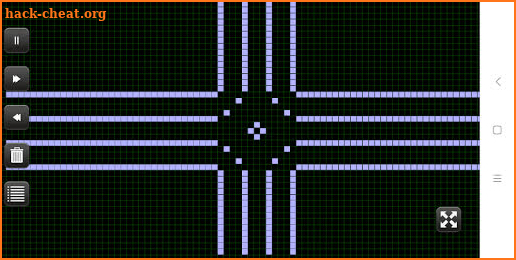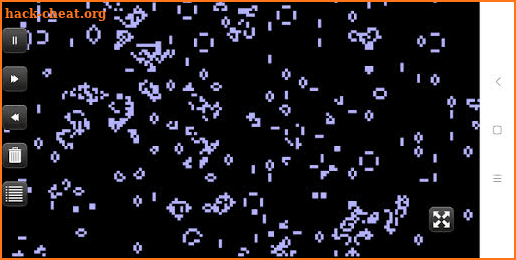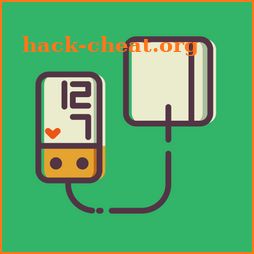

| For Android: 2.3 and up | Guide: Game of Life cheats tutorial |
| When updated: 2019-08-25 | Star Rating: |
| Name: Game of Life hack for android | Extension: Apk |
| Author: orion games | File Name: com.oriongame.gameoflife |
| Current Version: 1.0 | User Rating: Everyone |
| Downloads: 10- | Version: mod, apk, unlock |
| System: Android | Type: Education |




Watch ↑The Game of Life↓ (English Cover)【JubyPhonic】人生ゲーム video.

Watch COUPLES BATTLES: THE GAME OF LIFE!! CRUNDEE vs GARREAH video.

Watch COUPLES BATTLES: THE GAME OF LIFE!! video.

Watch [Hatsune Miku] ↑The Game of Life↓ [English Subbed PV] video.

Watch GAME OF LIFE! video.

Watch COLLEGE OR MARRIAGE?! | Game Of Life PT.1 video.

Watch Game of Life IRL video.

Watch The Game of Life | Robot Chicken | Adult Swim video.

Watch I CANT STOP HAVING BABIES! (The Game Of Life Online) video.

Watch Let's Play - Family Game Night 3: The Game of Life video.

The Mini game of Life, also known simply as Life, is a cellular automaton devised by the British mathematician John Horton Conway in 1970. The mini game is a zero-player mini game, meaning that its evolution is determined by its initial state, requiring no further input. One interacts with the Mini game of Life by creating an initial configuration and observing how it evolves, or, for advanced users, by creating patterns with particular properties. Rules The universe of the Mini game of Life is an unlimited, two-dimensional orthogonal grid of square cells, each of which is in one of two possible states, alive or dead, (or populated and unpopulated, respectively). Every cell interacts with its eight neighbours, which are the cells that are horizontally, vertically, or diagonally adjacent. At each step in time, the following transitions occur: 1. Any live cell with fewer than two live neighbours dies, as if by underpopulation. 2. Any live cell with two or three live neighbours lives on to the next generation. 3. Any live cell with more than three live neighbours dies, as if by overpopulation. 4. Any dead cell with exactly three live neighbours becomes a live cell, as if by reproduction. The initial pattern constitutes the seed of the system. The first generation is made by applying the above guidelines simultaneously to every cell in the seed; births and deaths occur simultaneously, and the discrete moment at which this happens is sometimes called a tick. Each generation is a pure function of the preceding one. The guidelines continue to be applied repeatedly to make further generations. In late 1940, John von Neumann defined life as a creation (as a being or organism) which can reproduce itself and simulate a Turing machine. Von Neumann was thinking about an engineering solution which would use electromagnetic components floating randomly in liquid or gas.This turned out not to be realistic with the technology accessible at the time. Stanislaw Ulam invented cellular automata, which were intended to simulate von Neumann's theoretical electromagnetic constructions. Ulam discussed using computers to simulate his cellular automata in a two-dimensional lattice in a few papers. In parallel, Von Neumann attempted to construct Ulam's cellular automaton. Although successful, he was busy with another projects and left some info unfinished. His construction was complicated because it tried to simulate his own engineering design. Motivated by questions in mathematical logic and in part by work on simulation mini games by Ulam, among others, John Conway began doing experiments in 1968 with a dozens of various 2D cellular automaton rules.[3] Conway's initial goal was to define an interesting and unpredictable cell automaton. Thus, he wanted some configurations to latest for a long time before dying, another configurations to go on forever without allowing cycles, etc. It was a significant challenge and an begin trouble for years before experts on cell automatons managed to prove that, indeed, Conway's Mini game of Life admitted of a configuration which was alive in the sense of satisfying Von Neumann's two general requirements. While the definitions before Conway's Life were proof-oriented, Conway's construction aimed at simplicity without a priori providing proof the automaton was alive. Conway chose his guidelines carefully, after considerable experimentation, to meet these criteria: 1.There could be no explosive growth. 2.There could exist little initial patterns with chaotic, unpredictable outcomes. 3.There could be potential for von Neumann universal constructors. 4. The guidelines could be as easy as possible, whilst adhering to the above constraints. Many patterns in the Mini game of Life eventually become a combination of still lifes, oscillators, and spaceships; another patterns may be called chaotic. A pattern may stay chaotic for a very long time until it eventually settles to such a combination.



 Messages SMS: Text Messaging
Messages SMS: Text Messaging
 MyTel
MyTel
 Twisted Ropes: Untangle 3D
Twisted Ropes: Untangle 3D
 Slice Puzzle
Slice Puzzle
 Pro TV: TV Web Browser
Pro TV: TV Web Browser
 Frontier Heroes : Deck of Fate
Frontier Heroes : Deck of Fate
 Back Fight
Back Fight
 Countryball: World 1930
Countryball: World 1930
 SafeBP
SafeBP
 Woola - AI Photo Enhancer
Woola - AI Photo Enhancer
 Live DV Hacks
Live DV Hacks
 Ins mate Hacks
Ins mate Hacks
 Vr 3D 360 Videos Hacks
Vr 3D 360 Videos Hacks
 LUMIN Hacks
LUMIN Hacks
 SAX Video Player : All Format HD Video Player 2021 Hacks
SAX Video Player : All Format HD Video Player 2021 Hacks
 Attop Drone Hacks
Attop Drone Hacks
 WiFiCamera Hacks
WiFiCamera Hacks
 Vivitar DVR922 Hacks
Vivitar DVR922 Hacks
 Antutu Benchmark Free Advice Hacks
Antutu Benchmark Free Advice Hacks
 Universe VR Hacks
Universe VR Hacks
Share you own hack tricks, advices and fixes. Write review for each tested game or app. Great mobility, fast server and no viruses. Each user like you can easily improve this page and make it more friendly for other visitors. Leave small help for rest of app' users. Go ahead and simply share funny tricks, rate stuff or just describe the way to get the advantage. Thanks!
Welcome on the best website for android users. If you love mobile apps and games, this is the best place for you. Discover cheat codes, hacks, tricks and tips for applications.
The largest android library
We share only legal and safe hints and tricks. There is no surveys, no payments and no download. Forget about scam, annoying offers or lockers. All is free & clean!
No hack tools or cheat engines
Reviews and Recent Comments:

Tags:
Game of Life cheats onlineHack Game of Life
Cheat Game of Life
Game of Life Hack download